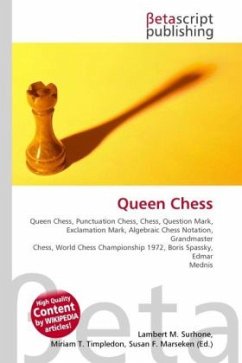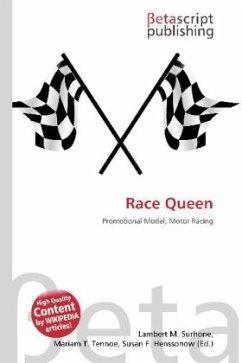
Queen and Pawn versus Queen Endgame
Versandkostenfrei!
Versandfertig in 6-10 Tagen
36,99 €
inkl. MwSt.

PAYBACK Punkte
18 °P sammeln!
High Quality Content by WIKIPEDIA articles! The queen and pawn versus queen endgame is a chess endgame in which both sides have queens and one side has a pawn. Cross-checks are often used as a device to win the game by forcing the exchange of queens. Humans knew little about it until the advent of endgame tablebases due to its sheer complexity, although it is more common than the queen versus pawn endgame. The queen is the most powerful piece in the game of chess and can move in any direction. Each player starts the game with one queen, placed in the middle of their first rank next to their ki...
High Quality Content by WIKIPEDIA articles! The queen and pawn versus queen endgame is a chess endgame in which both sides have queens and one side has a pawn. Cross-checks are often used as a device to win the game by forcing the exchange of queens. Humans knew little about it until the advent of endgame tablebases due to its sheer complexity, although it is more common than the queen versus pawn endgame. The queen is the most powerful piece in the game of chess and can move in any direction. Each player starts the game with one queen, placed in the middle of their first rank next to their king. The white queen starts on a white square, and the black queen on a black square, thus the mnemonic "queen gets her color" or "queen on color". In algebraic notation, the white queen starts on the d1 square and the black queen starts on the d8 square. In the game shatranj, an ancestor of chess, the queen was a fairly weak piece called a fers or vizier, only able to move or capture one square in a diagonal direction similar to a pawn. The modern queen's move arose in 15th century Europe.












